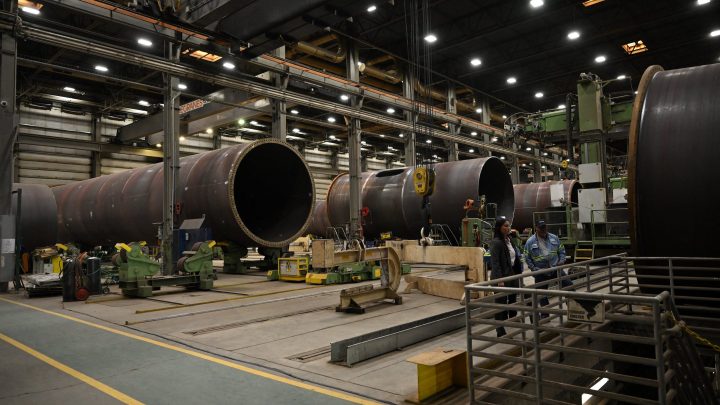
After a tough year, manufacturing has reasons to be hopeful
After a tough year, manufacturing has reasons to be hopeful

There was news Friday about the manufacturing sector. Factory orders for November were up by 2.6% — better than economists were expecting. But, orders were up just 0.7% year over year. (As we often mention regarding this data, commercial aircraft orders can skew the numbers, and they did spike 80% from the month before.)
And looking at the latest jobs report, manufacturing payroll employment barely budged from December 2022 to December 2023 — even though the economy added about 2.7 million jobs overall.
In the face of high interest rates and a weakening global economy, manufacturing activity contracted in 2023. “Running a manufacturing business is pretty damn hard work right now,” said Ned Hill, a professor of economic development at Ohio State University.
He said surveys of local manufacturers find that hiring entry-level workers is a top concern.
Plus: “Those who deal with housing products are nervous about interest rates,” he said. “One-third of the small-to-midsize companies that responded are trying to sell their businesses, which to me is a sign of uncertainty.”
All this does sound pretty grim. But actually, said economist Mark Zandi at Moody’s Analytics, with interest rates so high, we should be grateful it’s not way worse.
“Manufacturing is generally the part of the economy that goes down the tubes and pushes it into recession,” he said. “So the fact that it kind of held its own is pretty incredible. Typically in a rising-rate environment, you see lots of job losses.”
Zandi said one reason that hasn’t happened is the federal government has invested billions in infrastructure as well as electric vehicle and semiconductor production.
Luckily for him, Lyman Munson’s small manufacturing company in Columbia, South Carolina, serves those industries.
“We’re involved in the final fit and finish of components like crankshafts, jet engine blades — so the jet engine goes all the way to Europe,” he said.
Munson sees more demand on the horizon.
“We’re excited about reshoring manufacturing sites to be closer to their end users. Transportation industry — we’re through the strike, and [there’s] lots of demand for vehicles,” he said.
Right now, Munson added, business for his 35-employee manufacturing operation is good.
There’s a lot happening in the world. Through it all, Marketplace is here for you.
You rely on Marketplace to break down the world’s events and tell you how it affects you in a fact-based, approachable way. We rely on your financial support to keep making that possible.
Your donation today powers the independent journalism that you rely on. For just $5/month, you can help sustain Marketplace so we can keep reporting on the things that matter to you.

















